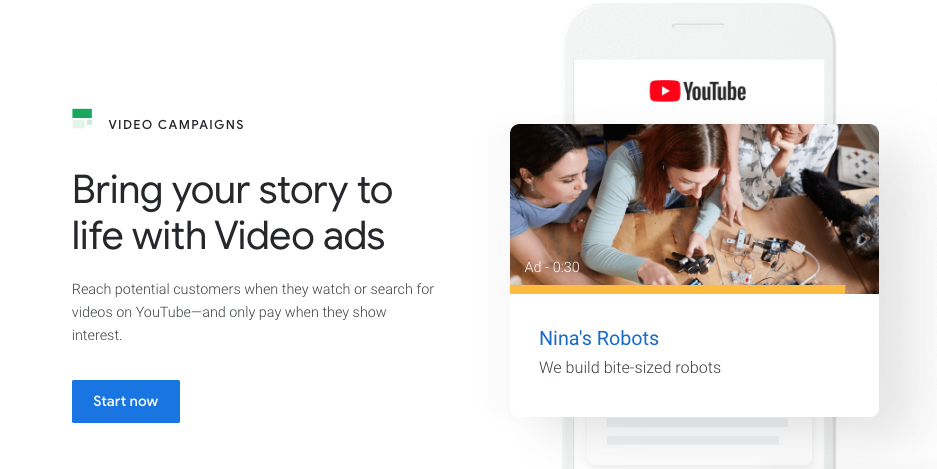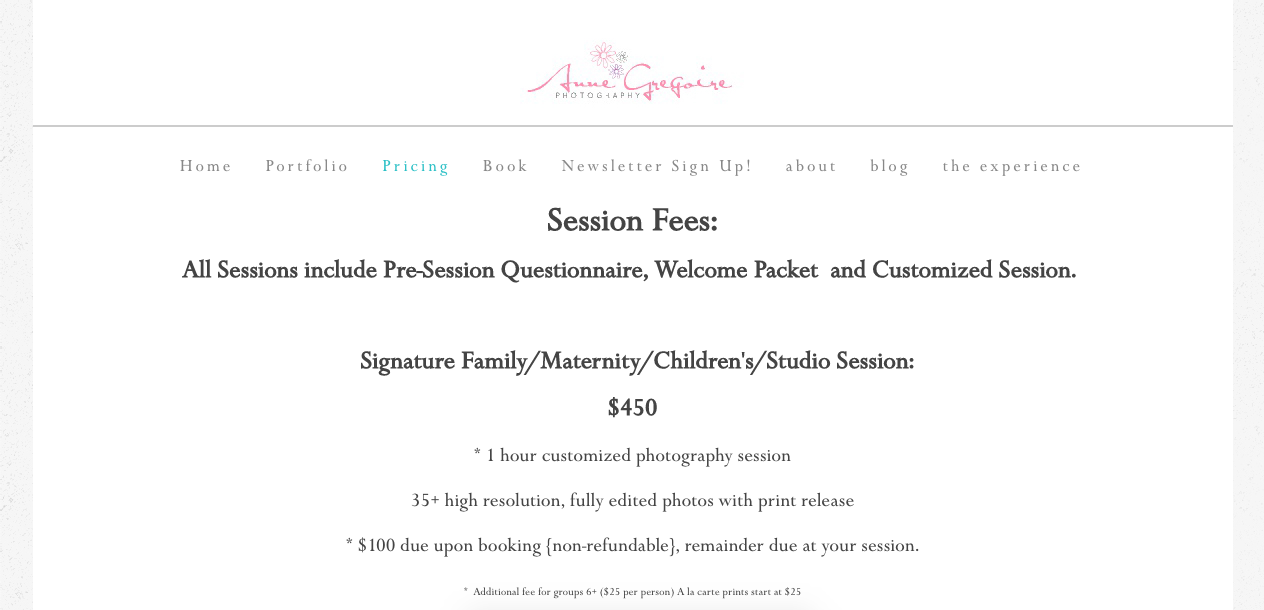8 Google Ads Strategy Tips To Triple Conversions
Here’s what happens when you don’t know these Google Ads strategy tips.
You have this bright idea to grow your company’s revenue by running online search ads. Good plan.
But then, because of a lack of experience and the fact you’re trained as an insurance rep and not a paid ads expert, for example, the Google ads experiment fails.
You end up spending thousands of dollars on these ads and you do get a few leads. But none of them turn into a sale. That’s money right down the drain.
An excellent idea is followed by terrible execution.
And this poor Google Ads performance can literally ruin a company’s entire marketing budget if they don’t stop the ad from running.
Forget about making a profit when the mismanaged cost-per-click campaign takes your company to the cleaners.
This guide will help you avoid that costly mistake.
Follow these 8 Google Ads strategic tips to boost conversions and make your business more money. These are the same principles our PPC agency uses to make clients more money.
Google Ads Remains Effective
First, let’s take a step back to highlight why learning Google Ads is still to this day extremely beneficial.
If you’re looking for an ads success story, then look no further than Colgate. Their objective was to raise brand awareness and drive purchase consideration for the new Colgate Optic product.
The created a detailed digital plan centered around Youtube ads:


This Colgate advertising strategy proved effective as the brand saw the following results:
- 24M YouTube video views of the series
- 13% increase in brand awareness
- 1116% increase in brand interest
- 10.8% increase in purchase consideration (15.3% lift on smartphones)
If you want to learn how to get similar results for your company, keep reading to find out our strategies and tips when using Ads.
Google Ads Strategy Tips
Tip 1: Have A Clearly Defined Objective
When it comes to digital marketing, every successful campaign has a clearly defined objective.
Whether your goal is to get more qualified leads, raise brand awareness, or increase traffic to your website; using an objective based campaign gives you the best opportunity to hit jackpot.
But goals are all meaningless without accurate metrics. You can’t truly determine what’s been a successful campaign and what hasn’t unless you have the data to back it up.
Key performance indicators, usually referred to as KPI’s, are the most effective way to measure results.
Your KPIs can be as simple as sales, or daily website visits. But before your campaign goes live, make sure you’ve identified that goal and know how you’ll measure the results.
To give you an idea of why this is so important when it comes to the success of your marketing campaign, we’ll provide a basic example.
Let’s say you’re just getting ready to start a new Google Ads campaign. You decide that you want to run a search campaign to reach customers Googling your product or service.
Now that you know the type of campaign you’re going to run (search), you get more specific by selecting the objective of increasing leads. This will get you leads and other conversions by encouraging customers to take action. The leads goal recommends settings and features to attract people to your business.
Some of these include:
- Increase your potential customer base with audience targeting
- Shape how people engage with your business with extensions
- Expand your reach by showing ads to people as they browse sites, videos, and apps that partner with Google
You’ll notice that you can choose the networks you want your ads to be served on. Ads automatically sets your campaign to serve ads that appear near Google search results and other Google sites when people search for terms that are relevant to your keywords.
Additionally, you also have the option of adding on the display network feature. There’s no additional cost for using this feature and you can expand your reach by showing ads to relevant customers as they browse sites, videos, and apps across the Internet.
The next basic feature of the Ads platform that you’ll need to use in order to ensure success is targeting. Let’s say your business is located in Boston, Massachusetts. Obviously you’re going to select Boston, but you also can target multiple locations. In this example, we’d recommend targeting the New England area as a whole.
You can also target based on language. So if you’re a business in Miami, Florida and want to engage with the Spanish-speaking community, you can do that through Ads.
Now here’s where the money comes in and the true value of Ads can be seen. The next two settings you’ll need to incorporate are your Ads budget and bidding. A huge misconception about online advertising is that a small marketing budget goes nowhere.
That’s just not true. You can start out by spending as little as $50 per day.
You also have two options when it comes to delivery method: standard and accelerated. The standard budget method spends your budget evenly over time.
Alternatively, the accelerated budget spends your budget more quickly. Be advised, selecting the accelerated option may cause your budget to run out early. However, if you’re advertising a one time promotion this might be a better option.
This next feature is where some get tripped up, but if you break it down it’s easier to understand. The bidding process can be as simple or as advanced as you want to make it. Let’s say you want to focus on clicks, or whenever someone clicks your ad. You may be asking “how will I get these clicks”? You can use Ads to automatically maximize clicks, which will help you to get the most clicks while spending your full budget.
The more complex option that you can elect to do is to manually set bids yourself. Until you’ve run a few Ads campaigns it makes the most sense to stick with Ads automatic bidding strategy.
Finally, the last step before actually creating your ad is to choose what keywords you want to target. Here’s where you must target keywords that your target customers are searching for. Once your campaign launches, your ads will be served to these individuals.
Tip 2: Keep Target Customers In Mind When Creating Ads


While the numerous features that Ads provides to you are great, it’s easy to lose sight of your original goal: Getting customers most likely to buy to see your ads. A huge part of that is making sure you don’t forget about them when you’re actually creating ads.
Make sure your ads will get the attention of your target audience, raise customer interest, convince customers that they desire or need your product, and lead customers to take action through a call-to-action statement (CTA).
In order to truly know your target audience or current customer base you’re going to need to do some research if you haven’t yet. Without a deep understanding of your niche and audience, it’s a challenge to engage with the right customers.
Send out surveys to your email list, use the feedback previous customers have given your business, or simply call past customers to understand why they bought specifically from you. Any insights you can gain during this process will only help you write compelling copy and incentivizing offers to cash in on your ad campaign.
Don’t forget that customer research and creating ads should be fun. This is where you can show your creativity and distance yourself from competitors. Just make sure that whatever ad you create remains relevant. So no 4th of July ads should be served during Halloween. You can utilize Google callout extensions to do this effectively.
[optin]
Tip 3: Don’t Be Misleading
Although creating ads can be fun, there’s a fine line between advertising and being misleading. It shouldn’t be a surprise that everyone wants more people to click on their ads and visit their websites. However, some advertisements do the classic “bait and switch”.
An example would be an auto store serving an ad stating that they’re having a 50% sale on tires when in reality there is no sale. The company is simply trying to drive more clicks on their ad to increase overall traffic to their site in the hopes that they will see some return on investment.
Aside from being dishonest, being misleading while creating ads is simply unethical. And in the long run, the ethical companies are the ones that last.
So your ads need to be entirely accurate for the landing page being advertised. That means your top targeted keywords should be used in the content that’s included both on the landing page and the actual ad’s text.
To avoid being misleading by mistake, be sure that each ad group is entirely relevant for the landing page that you’re promoting and that it’s only being displayed for relevant queries.
Tip 4: Target Your Ads
All the time and effort you put into creating your ads are wasted if you don’t target them. You can avoid this mistake by using the ad groups feature within the Ads platform.
An ad group contains one or more ads and a set of related keywords. To improve results, you should try to focus all your ads and keywords in an ad group on one product or service.
There are three different types of keyword targeting that you can implement into your ad. Commonly called match types, they help to control which searches will trigger your ads. You can choose from a broad match, phrase match, and exact match in relation to the searched keyword.
For the best results, you should implement all three into your targeting strategy. It’s best to bid the most for exact match keywords and the least for broad match keywords. Another strategy you can use is to separate your ad groups by keyword type in addition to category. This will help keep your ad campaign well organized.
Still looking for more ways to reach your target audience? Be sure to check out Google’s targeting criteria. For instance, you can use geo-targeting to have your ads run in a particular geographic area.
You can also target ads according to type of website such as medical practitioners or attorneys. On top of that, you can target prospects based on certain online behaviors.
For example, frequently visited websites that are relevant to your business. However, if you would rather place your ad on a particular website and keep it there, you can.
Tip 5: A/B Test Constantly
If you’re a marketing guru then this concept shouldn’t be new to you. A/B testing is how digital marketing agencies are constantly able to improve the quality and effectiveness of their services.
When it comes down to it, A/B testing is simply trying one variable (like a short heading) and then trying another variable (like a long heading) to see what performs better. You then look at the data and metrics and see if one strategy or method was more effective or less effective than the other.
As digital marketers, we’re always testing because best practices and strategies are constantly changing. Without documenting and testing, it’s impossible to find out what works and what doesn’t. You may find that what was extremely effective last month is no longer relevant this month.
These tests span the entire funnel, beginning with identification of keywords to bid on and which ad copy to use, to the design of the landing page and any follow-up email marketing campaigns.
Make sure to only run one test at a time.
If you change your landing page design and add 20 new keywords at the same time, it’s impossible to know which made a bigger impact. Sometimes one single word can make all the difference.
You should create variations of your ads and monitor which ads and keywords get the best click through rate, the lowest cost per click (CPC), the highest number of conversions. That’s an excellent way to optimize conversion rates.
Once you know what works, keep only those ads that are performing well and start the process over again.
Tip 6: Track Your Conversions
Metrics remain invaluable, especially with conversion tracking. Being able to see what keywords are triggering a sale or a lead is huge advantage when it comes to optimizing your campaign to increase your ROI.
Actually, setting up conversion tracking is critical. A business conversion can be a purchase, a sign-up, or a lead. Essentially it’s the action or actions that you want your visitors to take on your website.
Without proper tracking in place, it’s impossible to track and promote successful keywords, ads, or keyword themes. Conversion tracking is what allows ongoing optimization for your business based on the data.
On top of that, it also gives you direct insight into the ROI for your digital marketing efforts. This exercise is called conversion rate optimization (CRO).
Tip 7: Tweak Your Campaigns
Let’s face it, ad campaigns can be hard to manage by yourself.
A good campaign needs to be monitored and updated at least once a week to keep costs low and eliminate ineffective keywords.
That takes time that you may not have, which is why you may want to consider using a digital marketing agency.
It’s easy to make changes to campaigns because you can adjust your Ads settings at any time. You should use the opportunity to make these changes while the campaign is still running.
Some of the changes you may want to consider for your campaigns are: pausing keywords and ads with low click-through rates, lowering keyword bids if a campaign is hitting daily budget limits, and adding new versions if ads are underperforming.
A great way to know how your campaigns are doing is by looking closely at your search term reports. This can help you identify low click-through rates, higher cost-per-click keywords, decreased time on site, and any issues that are having negative affect.
Based on the search term reports, you could clear out keywords that are no longer relevant or are low performers and replace them with new keywords that will perform better.
Tip 8: Review Your Landing Page


You did the research. Found your target audience and how to reach them using Ads. And you even targeted specific keywords that were relevant.
Everything looked great, until they clicked on the ad and got to your landing page.
The bottom line is that you can have an awesome ad that’s been targeted perfectly, but if you take users to a site that leads to a bad impression, you won’t convert the sale.
To be honest, the landing page is what many people look over and it ruins the end goal: getting the customer to buy. And studies show that a simple website design converts better.
Instead of ignoring it, review your landing page before you run a campaign. Make sure you split test, review, tweak, and whatever else is necessary to improve your landing page. Don’t get consumed in only creating the ad.
Yes, it’s important, just not the only important aspect.
Conclusion
A smart Google Ads strategy doesn’t mean you’re going to instantly output a 1,000% return on every dollar invested into the platform. But just using one or two of these strategic tweaks can easily net you double or maybe triple the return.
That’s why it pays to read articles like this and continue educating yourself.
Already have enough on your plate as it is or want a team like us to handle your pay-per-click campaigns for you? Contact us to see if we’re a good fit for each other. Or check out our paid ads process to learn more.




